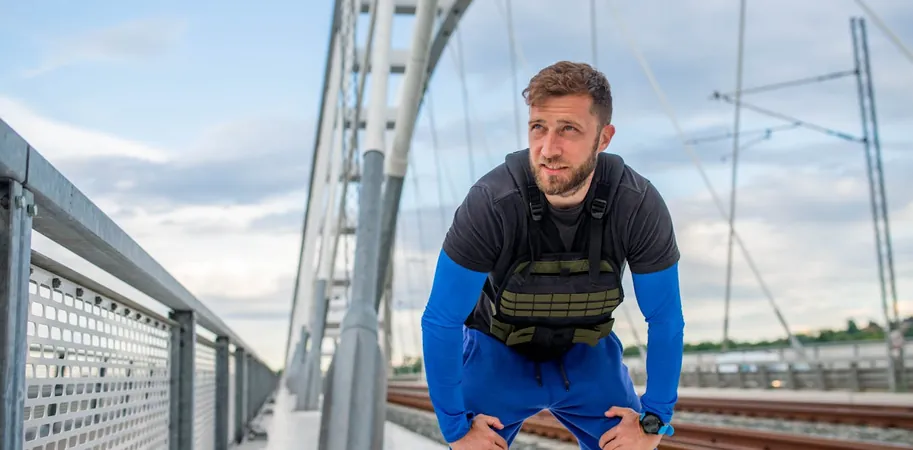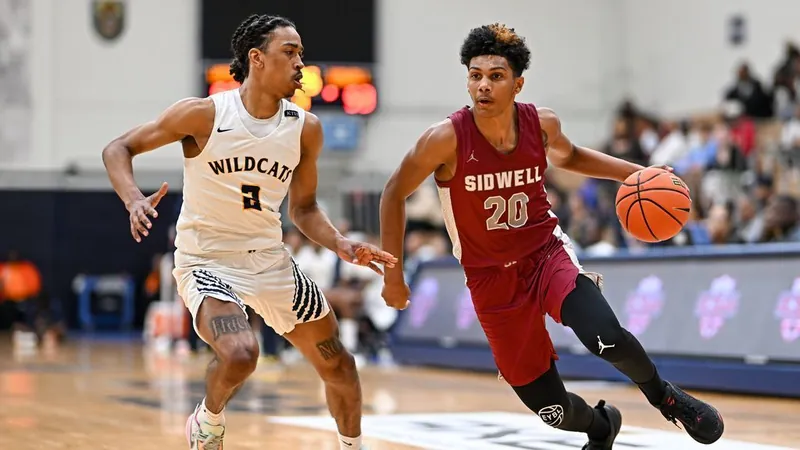
The Truth About Weighted Vests: Are They the Game-Changer Your Fitness Routine Needs?
2025-01-06
Author: Yan
A Brief History of Weighted Training
While the modern weighted vest might seem like a new invention, the concept of adding extra weight during physical activity is age-old. Historically, soldiers and adventurers have carried heavy packs on long treks to build endurance and strength. Today’s weighted vests, however, have been designed for comfort and adjustability, making them more accessible for everyday workouts.
What Does Research Say?
Evidence from numerous studies supports the benefits of using a weighted vest. A notable study from 1993 observed older adults who participated in a 20-week program wearing weighted vests during exercise. The results indicated enhancements in bone density, pain levels, and overall physical function.
Since then, numerous other studies have provided additional insights. For instance, wearing a vest that adds approximately 10% of your body weight during exercise has been shown to effectively elevate heart rate and energy expenditure. However, adding just 5% doesn’t lead to substantial improvements compared to standard body weight training.
Safety Considerations: Injury Risk or Performance Boost?
Concerns about increased injury risk when wearing weighted vests are prevalent. A small-scale 2021 study analyzed the biomechanics of running with added weight and found no significant detriment to running form. However, it’s essential to be cautious, especially for individuals with existing joint concerns. A 2018 clinical study did report some instances of back pain among participants with obesity, underscoring the importance of listening to one's body. If discomfort arises, it's wise to either decrease the weight or halt the session.
Weight Loss vs. Bone Health: What’s the Verdict?
Although weighted vests boost energy expenditure during exercises, the evidence around their efficacy for weight loss remains mixed. Some research suggests that wearing a vest can effectively enhance fat loss and muscle retention, especially in specific demographics, like postmenopausal women with osteoporosis. However, conflicting studies indicate that simply wearing a vest daily for extended periods might not yield significant fat loss compared to engaging in traditional exercise.
For older adults, the promise of improved bone health through weighted vests is of great interest. Some studies have reported gains in bone density following a structured program that includes vest training. However, not all research is in agreement, suggesting that other forms of exercise, like resistance training or impact activity (e.g., jumping or skipping), may yield similar or superior benefits.
Getting Started: Smart Progression is Key
For those new to fitness, diving straight into weighted vest training might not be the best approach. Focusing on enhancing overall fitness and strength through bodyweight exercises should come first. Once you have established a solid foundation, incorporating a vest can increase the intensity of your workouts.
Start with light weights—maybe around 5% of your body weight—gradually increasing to no more than 10% for high-impact activities like running. For resistance exercises such as push-ups or squats, you can also progress by adjusting load and repetitions.
It's worth noting that while weighted vests have their place in training, traditional equipment like dumbbells and kettlebells may sometimes offer more convenience and versatility.
Conclusion: Is a Weighted Vest Right for You?
In conclusion, while weighted vest training can be a beneficial addition to a well-rounded fitness regimen, it's just one of many options available. It effectively increases workout intensity and energy expenditure, particularly during activities like walking or jogging. But it’s essential to remember that similar outcomes can often be achieved with longer or more intense workouts without added weight.
For anyone considering adding a weighted vest to their routine, approaching the practice with knowledge, gradual progression, and self-awareness regarding one’s fitness level is crucial. With the right approach, a weighted vest might just be the secret weapon to unlocking new levels of strength and endurance!



 Brasil (PT)
Brasil (PT)
 Canada (EN)
Canada (EN)
 Chile (ES)
Chile (ES)
 Česko (CS)
Česko (CS)
 대한민국 (KO)
대한민국 (KO)
 España (ES)
España (ES)
 France (FR)
France (FR)
 Hong Kong (EN)
Hong Kong (EN)
 Italia (IT)
Italia (IT)
 日本 (JA)
日本 (JA)
 Magyarország (HU)
Magyarország (HU)
 Norge (NO)
Norge (NO)
 Polska (PL)
Polska (PL)
 Schweiz (DE)
Schweiz (DE)
 Singapore (EN)
Singapore (EN)
 Sverige (SV)
Sverige (SV)
 Suomi (FI)
Suomi (FI)
 Türkiye (TR)
Türkiye (TR)
 الإمارات العربية المتحدة (AR)
الإمارات العربية المتحدة (AR)